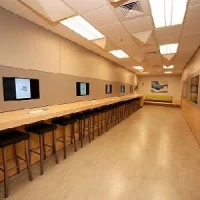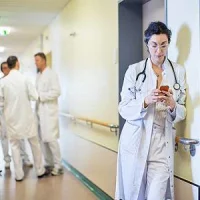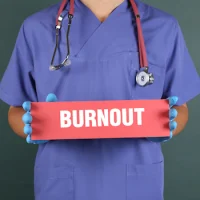New research from Indiana University School of Medicine demonstrates that email and social media (SoMe) can serve as effective tools for disseminating radiology educational content. SoMe offers substantial external visibility and branding potential for programmes, according to the research published in the journal Academic Radiology.
The radiology community has embraced SoMe, particularly Twitter, as a tool for increasing institutional visibility and practice building, physician engagement, networking, and research collaboration. However, published reports of SoMe utilisation explicitly for radiology education purposes are lacking within the medical literature, at least relative to other medical specialities, researchers said.
For this study, the researchers developed a new “Case of the Day” (COTD) educational initiative using email, SoMe (i.e., Twitter and YouTube), and a website to disseminate content. Trends in viewership and utilisation rate were assessed for the first year of implementation.
Using an image-rich format, a new unknown case was disseminated to radiology trainees and attendings at the researchers' institution by email twice per week, including history, salient images, and follow-up questions. Simultaneously, content was externally disseminated on Twitter and a publicly viewable departmental website. On subsequent days, the answer was posted via email, Twitter, and website in the form of a brief YouTube video lecture. Viewership data were collected over the first 12 months (1 July 2016 to 30 June 2017), and an anonymous survey of participants was performed.
According to the researchers, 65 COTDs had complete viewership data and were included in their analysis, yielding 4,911 “case” email views (mean = 76), 3,798 “answer” email views (mean = 58), 68,034 “case” Twitter impressions (mean = 1047), 75,724 “answer” Twitter impressions (mean = 1,164), 5,465 “case” Twitter engagements (mean = 84), and 5,307 “answer” Twitter engagements (mean = 82). COTD YouTube video lectures garnered 3,657 views (mean = 61) amounting to 10,358 minutes of total viewing time. Viewers were very satisfied with COTD quality, with 97 percent (n = 63) reporting the quality as “good” or “excellent.”
"Both in terms of widely disseminating educational content and providing visibility for educational efforts, SoMe was a clear winner over email and traditional website means. This is supported by our data, which showed an overall viewership growth trend on Twitter with regard to both case and answer Tweets, as well as a mild decrease in email viewership over the same time interval," the authors noted.
SoMe usage for medical education poses potential challenges with regard to professionalism, security, safekeeping of protected health information, vetting of non–peer-reviewed content, ongoing content generation, and oversight of materials. Furthermore, there is a lack of published studies evaluating the outcomes of SoMe-based educational initiatives, particularly with respect to trainee performance.
"In our study, we found that certain barriers prevent radiologists from routinely using SoMe for education purposes, including busy clinical workload, inconvenience of access at work, and workplace connectivity issues," the authors write. "Lastly, there will always be a certain segment of the trainee and faculty populations that do not have an interest in joining SoMe for educational purposes, and prior studies have identified generation gaps in its use and perceived utility for education purposes."
The study did find that the new COTD educational initiative had the clear result of increasing the resident, fellow, and faculty engagement on SoMe for professional purposes. After one year of COTD implementation, more than 40 radiologists and radiology trainees now use SoMe routinely, including for educational content and professional networking.
Source: Academic Radiology
Image Credit: Unsplash.com
References:
Koontz NA et al. (2018) Electronic and Social Media-based Radiology Learning Initiative: Development, Implementation, Viewership Trends, and Assessment at 1 Year. Academic Radiology June 2018 25:6 Pages 687-698 https://doi.org/10.1016/j.acra.2017.11.025
Latest Articles
social media, radiology education, SoMe
New research from Indiana University School of Medicine demonstrates that email and social media (SoMe) can serve as effective tools for disseminating radiology educational content. SoMe offers substantial external visibility and branding potential for p










